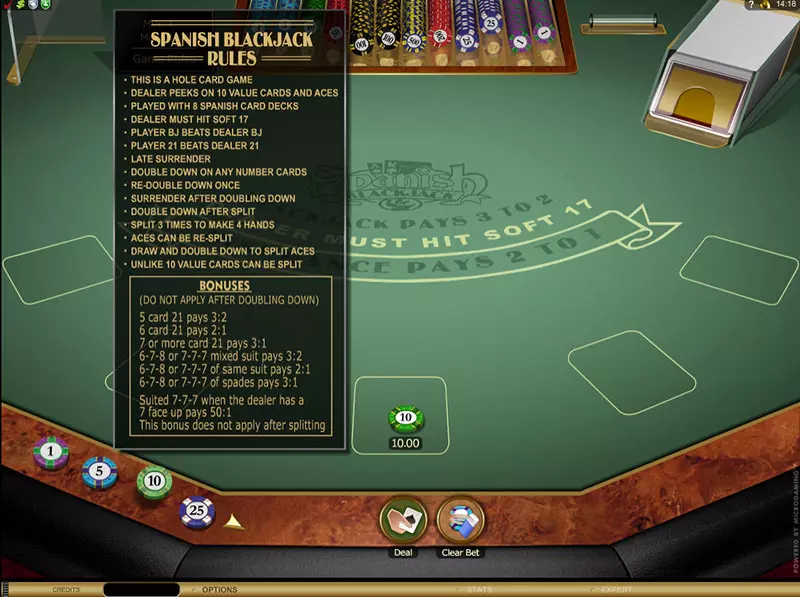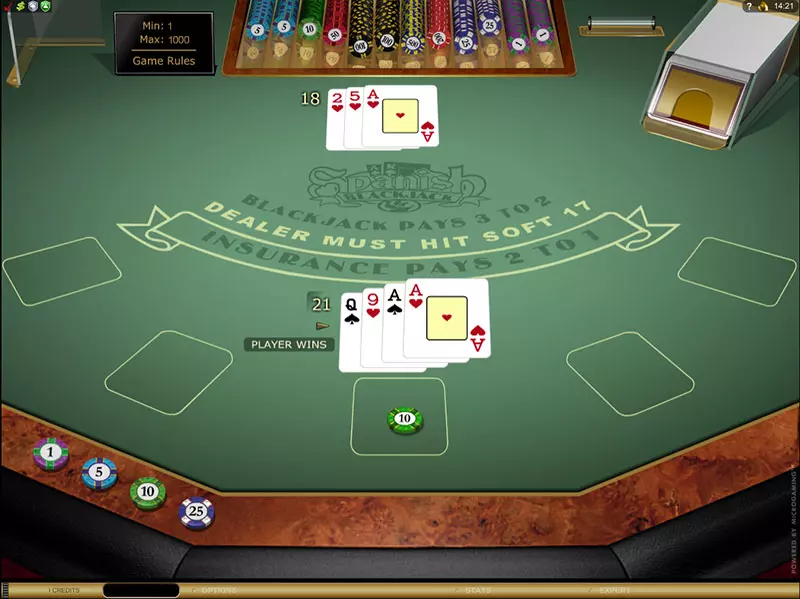Players around the world play blackjack due to its challenging rules and the opportunity to gain an advantage over the casino by using the needed strategy, knowledge, and skills. As one of the most popular card games of all time, it has a number of variations, most of which have been developed over the years by professional players. Some versions appealed to the interest of many blackjack fans, so that they have become an inseparable part of many land-based and virtual casinos.
Moreover, players can enjoy many of the variations online which makes it extremely easy for them to play whenever and wherever they want. It is highly recommended to choose a reputable casino when playing online as this is the only way casino fans can be sure that their sensitive information will receive a high level of protection. Also, it is always essential to double-check the rules of the variation you intend to play in advance as they can vary between casinos.
What comes to mind immediately to most experienced players when they think of blackjack is the variation Spanish 21. It is undoubtedly one of the most widespread versions of the game and it is incredibly popular all over the world. This variation has an easy-to-grasp set of rules and learning its fundamentals is easy as it is very akin to the classic variation of the game. However, what makes it different and enticing is the added interesting rules and subtleties.
Brief History of Spanish 21
The origin of this variation can be traced back to the mid-1990s when it first appeared in Nevada-based casinos. The ownership of Spanish 21 is held by Masque Publishing Inc., a company headquartered in Colorado. This version is also commonly known as Spanish Blackjack even though this name is not the official one. Interestingly, it resembles another very popular variation of the classic game – the Malaysian Pontoon.
Rules of Spanish 21
Spanish 21 is a variation of blackjack and as such, it uses its fundamental principles and rules. The objective and the way the cards are valued are exactly the same as in the classic game and the players also compete against the dealer. This is the reason why it is best to first get familiar with the basics of the classic game first in order to grasp the additional rules and differences of this version.
What sets this version apart from the rest is the number of decks and cards involved in the game. In general, the standard blackjack variation has 52 playing cards but in this variation, only 48 cards are used as the rules enforce all of the tens to be removed from each deck. The number of decks in the game is usually six or eight, without any tens in them. Another difference Spanish 21 has in comparison to the classic game, is that whenever players’ hands total twenty-one, they automatically win, regardless of the cards of the dealer.
Doubling down is allowed on any two cards. This move can be made after splitting. The option to surrender is available after doubling down, meaning that players lose their initial bet but get to keep the wager they made when they doubled down. In most cases the rules enforce the dealer to hit on soft 17 and there is a hole card, meaning that the dealer peeks for blackjack. It is worth mentioning that the additional rules of this variation differ from one casino to another and should be always considered in advance.

Payout in Spanish 21
When it comes to Spanish 21, players always win when their hands reach twenty-one, regardless of the cards of the dealer. However, players are paid differently depending on the number of cards which form the winning hand. In this sense, they are paid 3:2 when they make blackjack using five cards of any suit. If the case is that they happen to win using six cards of any suit, the payout is 2:1. Provided that the winning hand consists of seven cards of any suit, you will leave the table with a payout of 3:1.
Players who are lucky enough to receive 6, 7, and 8 will enjoy a payout of 3:2. Provided that the 6, 7, and 8 are all Spades, the payout is 3:1. If a player hits 21 with the cards 6, 7, and 8 and are of the same suit, then the payout is 2:1. And if the winning hand is composed of three 7’s, the payout depends on the suits of the cards and coincides with the payouts associated with the 6-7-8 winning hands. The chart below visually presents the payouts associated with the different winning hands.
| Spanish 21 Payouts | |
|---|---|
| 5-card winning hand | 3:02:00 |
| 6-card winning hand | 2:01:00 |
| 7 or more cards | 3:01:00 |
| 6-7-8 of different suits | 3:02:00 |
| 6-7-8 of the same suit | 2:01:00 |
| 6-7-8 all spades | 3:01:00 |
| Three 7’s of different suits | 3:02:00 |
| Three 7’s of the same suit | 2:01:00 |
| Three 7’s, all spades | 3:01:00 |
European Blackjack
Pontoon
Atlantic City Blackjack
Multi Hand Blackjack
Spanish 21
Match the Dealer
Match the Dealer is the most common side bet you will come across when playing Spanish 21 games. As you might already know, a side bet is a bet placed next to your original bet. If you lose it, you do not lose your original bet and the other way around – if you lose your original bet, it does not mean you lose the side bet. Match the Dealer is a side bet that is based on the player’s cards and the dealer’s upcard.
Players bet on whether their first card or cards will match the rank of the dealer’s upcard. You win a bigger payout if your first two cards are of the same suit and rank as the dealer’s upcard. The payout depends on the number of decks included in the game. In the lines below, you can see all the possible scenarios and the payouts associated with them.
| Decks | 1 unsuited match | 1 suited match | 2 unsuited matches | 2 suited matches | 1 suited/1 unsuited match | House Edge |
|---|---|---|---|---|---|---|
| 2 | 4:1 | 15:1 | 8:1 | Not possible | 19:1 | 3.63% |
| 4 | 4:1 | 10:1 | 8:1 | 20:1 | 14:1 | 3.20% |
| 5 | 3:1 | 13:1 | 6:1 | 26:1 | 16:1 | 3.53% |
| 6 | 4:1 | 9:1 | 8:1 | 18:1 | 13:1 | 3.06% |
| 8 | 3:1 | 12:1 | 6:1 | 24:1 | 15:1 | 2.99% |
Some casinos offer a variation of the Match the Dealer side bet in which blackjack enthusiasts have to predict whether their first cards will match the dealer’s hole card.
If you ask professional blackjack players whether the Match the Dealer side bet is worth it, they would tell you that blackjack side bets are not beneficial from the players’ perspective. What is more, no blackjack betting strategy involves side bets. However, if you want to add extra excitement to the gameplay, placing a side bet is a good option.
Advantages of Spanish 21
In Spanish 21, players are allowed to make different moves which can work in their favour if made in the appropriate time. There aren’t as many restrictions as in the classic game which gives them the needed freedom to determine their moves and bets. As we already mentioned above, one of the most notable advantages of this version is that whenever players have a total of twenty-one in their hands they automatically win. This rule gives them moderately good chances of achieving the desired result by using their skills and knowledge.

Disadvantages of Spanish 21
As previously mentioned, all of the tens are taken out of the decks which makes it harder for the players to reach twenty one and can be considered as a major drawback. The high number of packs involved – six or eight, makes it very difficult for card counters to successfully keep track of the cards and derive the needed valuable information. Moreover, it is compulsory for players to take their time and adjust their basic strategy accordingly due to the fact that no tens are involved.
Conclusion
Spanish 21 is played by hundreds of players worldwide and it is one of the most well-known variations of blackjack. Nowadays, a lot of casinos offer this version due to its popularity and enticing rules. It is considered to work in favour of the players and this is the reason why many blackjack devotees decide to give it a try. However, they should always get familiar with its subtleties and specifications in order to reduce their money losses as much as possible.
Just like any other variation, it requires solid knowledge of the basic rules of the games.. It is also compulsory to know the basic strategy backward and forward and to make the needed adjustments in order to make a profit in the long term. Spanish 21 can be both enjoyable and interesting as long as players prepare themselves in advance.